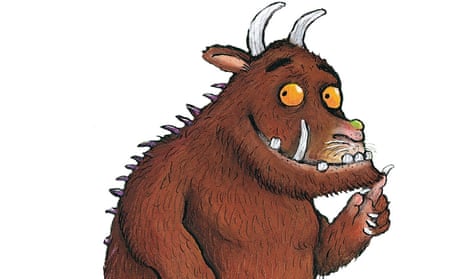Forget the morals that millennia of children have learned from the Hare and the Tortoise and the Fox and the Crow: Aesop would have had a greater effect with his fables if he’d put the stories into the mouths of human characters, at least according to new research from the University of Toronto’s Ontario Institute for Studies in Education (OISE).
In the Canadian study, researchers read one of three stories to almost 100 children between four and six years old: Mary Packard’s Little Raccoon Learns to Share, in which anthropomorphic animals learn that sharing makes you feel good; a version of the story in which the animal illustrations were replaced with human characters; or a control book about seeds.
Before they were read the story, the children chose 10 stickers to take home and were told that an anonymous child would not have any stickers to take home. It was suggested to the children that they could share their stickers with the stickerless child by putting them in an envelope when the experimenter was not looking. After they had been read the story, the children were allowed to choose another 10 stickers, and again asked to donate to the stickerless child.
The study, which has just been published in the journal Developmental Science, found that those children who were read the book with human characters became more generous, while “in contrast, there was no difference in generosity between children who read the book with anthropomorphised animal characters and the control book; both groups showed a decrease in sharing behaviour,” they write.
The academics, led by Patricia Ganea, associate professor of early cognitive development at OISE, said that existing studies using the same method showed that before they are six, “children share hardly any stickers with their friends, and even after age six, children keep most of the stickers for themselves”, so the task “offers a lot of room for children to change their sharing behaviour after reading the story”.
But reading a book about sharing “had an immediate effect on children’s pro-social behaviour”, they found. “However, the type of story characters significantly affected whether children became more or less inclined to behave pro-socially. After hearing the story containing real human characters, young children became more generous. In contrast, after hearing the same story but with anthropomorphised animals or a control story, children became more selfish.”
Ganea said that while “a growing body of research has shown that young children more readily apply what they’ve learned from stories that are realistic … this is the first time we found something similar for social behaviours”.
“The finding is surprising given that many stories for young children have human-like animals,” said Ganea.
From Aesop to the Gruffalo via Winnie-the-Pooh, talking animals play a major part in children’s literature. A 2002 review of around 1,000 children’s titles found that “more than half of the books featured animals or their habitats, of which fewer than 2% depicted animals realistically”, the majority anthropomorphising them.
Ganea felt that it would be useful for children’s authors to be aware of her research. “We tell stories to children for many reasons, and if the goal is to teach them a moral lesson then one way to make the lesson more accessible to children is to use human characters. Yes, we should consider the diversity of story characters and the roles they are depicted in,” she said.
Chris Haughton, author and illustrator of animal picture books including Oh No, George! and Shh! We Have a Plan, felt that while “a simple instructional moral message might work short term”, the stories that have longer impact are the ones that resonate deeply. “I read Charlotte’s Web as a child and I know that made a big impression on me. I thought about it for a long time after I read the story. I identified with the non-human characters. That, among other things, did actually turn me into a lifelong vegetarian. I think a truly engaging and quality story that resonates with the child will be replayed in their mind and that has the real effect on them and the course of their life,” he said.
Picture book author Tracey Corderoy said that in her experience, “where the main characters of a moral tale are animals as opposed to humans, the slight distancing that this affords the young child does a number of important things. It softens the moral message a little, making it slightly more palatable. Some would feel that this waters it down and makes it less effective. But the initial ‘saving-face’ that using animals brings quite often results, I feel at least, in keeping a child reader engaged.”
Kes Gray, the author of the bestselling rhyming animal series Oi Frog and Friends, was unperturbed by the researchers’ findings. “Authors and illustrators have no need to panic here, as long as we keep all of the animal protagonists in all of their future stories unreservedly cuddly. Big hair, big eyes and pink twitchy noses should pretty much nail it,” he said.

Comments (…)
Sign in or create your Guardian account to join the discussion